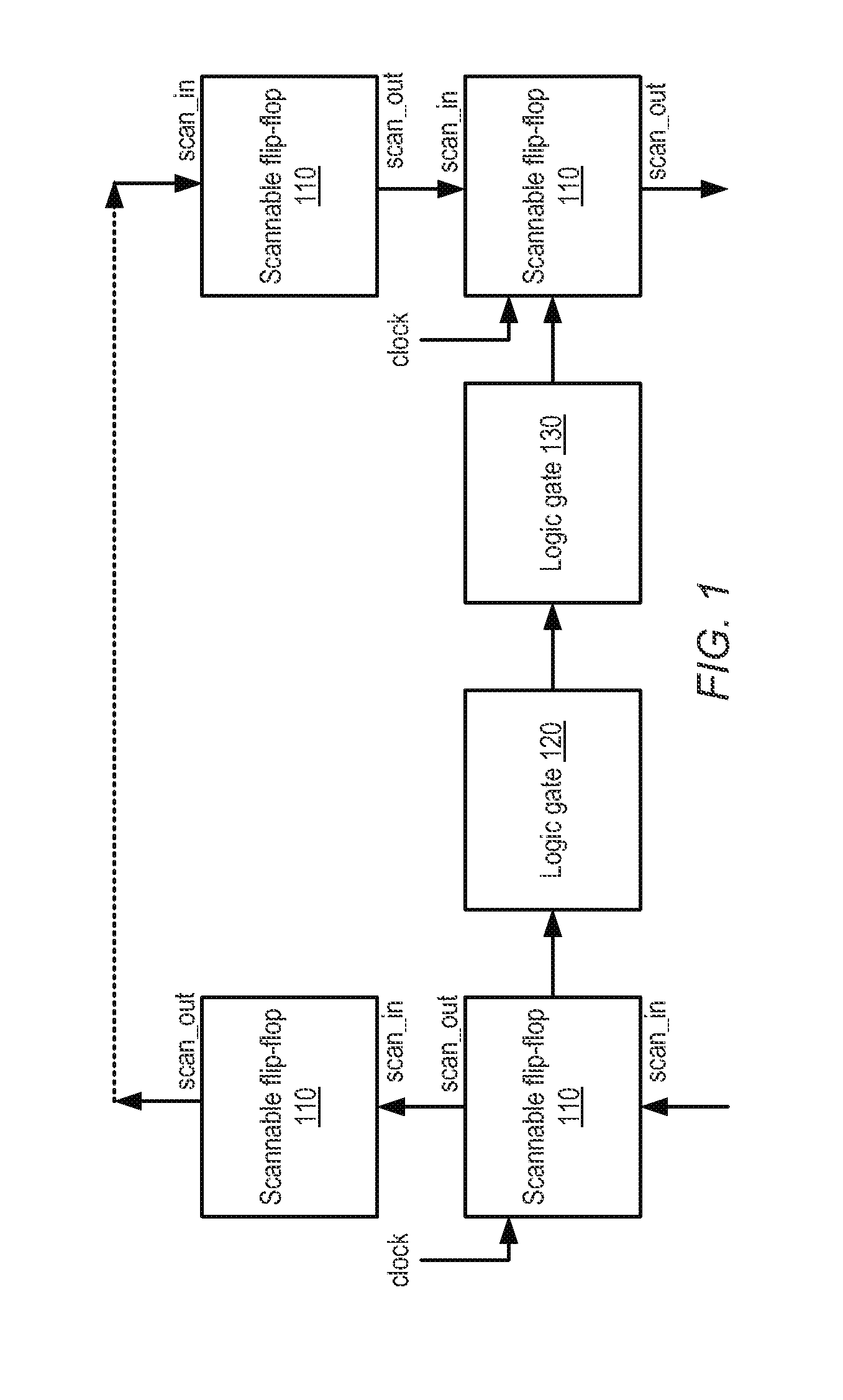Scannable flip-flop with hold time improvements
a technology of hold time and flip-flop, which is applied in the direction of pulse generators, pulse techniques, electrical devices, etc., can solve the problems of performance penalty, impracticality or even impossible to test, etc., and achieve the effect of improving circuit performance and reducing data hold tim
- Summary
- Abstract
- Description
- Claims
- Application Information
AI Technical Summary
Benefits of technology
Problems solved by technology
Method used
Image
Examples
Embodiment Construction
[0023]FIG. 1 illustrates an example of a portion of a scannable logic path. In the illustrated embodiment, scannable flip-flop 110 is coupled to a logic gate 120, which is in turn coupled to a logic gate 130. Logic gate 130 is coupled to another scannable flip-flop 110. Generally speaking, scannable flip-flop 110 may correspond to any suitable scannable state element, such as a static or dynamic flip-flop. Scannable flip-flop 110 may operate to capture and store input data in response to a clock signal. For example, scannable flip-flop 110 may be an edge-triggered state element.
[0024]Logic gates 120 and 130 may be configured to implement combinatorial logic functions of any suitable type (e.g., AND, OR, NAND, NOR, XOR, XNOR, or any suitable Boolean expression). Either of logic gates 120 or 130 may be implemented using static or dynamic logic. For example, if implemented using dynamic logic, gates 120 or 130 may also be clocked by a clock signal (not shown) that may be the same as or...
PUM
 Login to View More
Login to View More Abstract
Description
Claims
Application Information
 Login to View More
Login to View More - R&D
- Intellectual Property
- Life Sciences
- Materials
- Tech Scout
- Unparalleled Data Quality
- Higher Quality Content
- 60% Fewer Hallucinations
Browse by: Latest US Patents, China's latest patents, Technical Efficacy Thesaurus, Application Domain, Technology Topic, Popular Technical Reports.
© 2025 PatSnap. All rights reserved.Legal|Privacy policy|Modern Slavery Act Transparency Statement|Sitemap|About US| Contact US: help@patsnap.com



